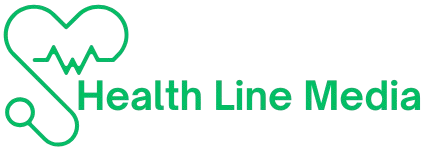In today’s digital age, health management has evolved significantly, making it easier for individuals to access their medical information and connect with healthcare providers. One of the most effective tools in this transformation is the MyHealth platform. This article will delve into what MyHealth is, its features, benefits, and how it can empower users to take charge of their health.
What is MyHealth?
MyHealth is a digital health platform designed to facilitate better communication between patients and healthcare providers. It allows users to access their medical records, schedule appointments, request prescription refills, and communicate with their doctors. This platform is essential for anyone looking to manage their health effectively and efficiently.
Features of MyHealth
1. Access to Medical Records
One of the primary features of MyHealth is the ability to view and manage personal medical records. Users can access important health information, such as:
- Medical History: A comprehensive overview of past medical conditions, surgeries, and treatments.
- Test Results: Access to lab results and imaging studies, allowing users to stay informed about their health status.
- Medications: A list of current and past prescriptions, helping users manage their medications effectively.
2. Appointment Scheduling
With MyHealth, scheduling appointments with healthcare providers has never been easier. Users can:
- Book Appointments Online: Choose available time slots that fit their schedule, reducing the need for phone calls and waiting on hold.
- Receive Reminders: Get notifications for upcoming appointments, ensuring they never miss an important visit.
3. Prescription Management
MyHealth simplifies prescription management by allowing users to:
- Request Refills: Easily request medication refills without needing to visit the doctor’s office.
- View Medication History: Keep track of past prescriptions and dosages, which can be helpful for discussions with healthcare providers.
4. Secure Messaging
Communication with healthcare providers is crucial for effective health management. MyHealth provides a secure messaging system that allows users to:
- Ask Questions: Directly message their healthcare provider with non-urgent questions or concerns.
- Receive Responses: Get timely responses from their providers, enhancing the continuity of care.
5. Health Tracking Tools
MyHealth often includes health tracking features that enable users to monitor their health metrics, such as:
- Vital Signs: Keep track of blood pressure, heart rate, and other vital statistics.
- Weight Management: Record weight changes and set goals for healthier living.
Benefits of Using MyHealth
1. Empowerment in Health Management
One of the most significant benefits of MyHealth is the empowerment it provides users. By having easy access to their health information, users can make informed decisions about their care and take an active role in managing their health.
2. Improved Communication with Healthcare Providers
The secure messaging feature fosters better communication between patients and providers. This improved interaction can lead to enhanced understanding and better health outcomes, as users can seek clarification on their health conditions and treatments.
3. Convenience
MyHealth eliminates the need for unnecessary office visits, allowing users to manage many aspects of their healthcare from the comfort of their homes. The ability to schedule appointments and request prescription refills online saves time and effort.
4. Increased Engagement in Personal Health
By providing tools to track health metrics and access educational resources, MyHealth encourages users to engage more actively in their health and wellness. This engagement can lead to healthier lifestyle choices and better overall health outcomes.
5. Enhanced Coordination of Care
MyHealth can streamline the coordination of care among different healthcare providers. By having access to shared medical records, providers can collaborate more effectively, ensuring that users receive comprehensive care.
How to Get Started with MyHealth
1. Creating an Account
To use MyHealth, individuals need to create an account. This typically involves:
- Providing Personal Information: Users may need to input their name, date of birth, and contact information.
- Verification Process: Some platforms may require verification through an email or phone number.
2. Linking Medical Records
Once an account is created, users can link their medical records. This process may involve:
- Entering Insurance Information: Providing details about insurance coverage to access medical records associated with the provider.
- Authorizing Record Access: Users may need to sign forms allowing MyHealth to access their medical records.
3. Navigating the Platform
After setting up the account and linking records, users can explore the MyHealth platform. It’s essential to familiarize themselves with the features available, including:
- Dashboard Overview: A summary of recent activity and health information.
- Navigation Menus: Access to appointments, medical records, and messaging.
4. Using the Features
Users can start utilizing the features of MyHealth immediately. They can:
- Schedule Appointments: Find available time slots and book appointments with their healthcare provider.
- Request Prescription Refills: Manage their medications through the platform.
Tips for Maximizing the Use of MyHealth
1. Regularly Check Your Account
Make it a habit to log into MyHealth regularly. This ensures users stay updated on their health information, upcoming appointments, and messages from healthcare providers.
2. Keep Your Information Updated
Ensure that personal and insurance information is always current. This will facilitate smoother interactions with healthcare providers.
3. Take Advantage of Health Tracking Tools
Utilize the health tracking tools offered by MyHealth to monitor vital signs, weight, and other health metrics. This information can be invaluable for discussions with healthcare providers.
4. Prepare Questions Before Appointments
Before scheduling an appointment, make a list of questions or concerns to discuss with the healthcare provider. This preparation ensures that users get the most out of their visits.
5. Engage with Educational Resources
Many MyHealth platforms offer educational resources about various health topics. Engaging with this content can help users make informed decisions about their health.
Privacy and Security in MyHealth
1. Data Protection Measures
MyHealth platforms prioritize user privacy and security. They typically employ various measures to protect personal health information, including:
- Encryption: Data is encrypted during transmission to safeguard against unauthorized access.
- Access Controls: Users can set passwords and security questions to protect their accounts.
2. Understanding Privacy Policies
It’s crucial for users to read and understand the privacy policies of MyHealth. This document outlines how personal information is used, shared, and protected.
3. Reporting Security Issues
If users suspect any unauthorized access or security breaches, they should report these issues immediately through the platform’s support channels.
Challenges and Considerations
1. Technological Barriers
Some individuals may face challenges in using digital health platforms due to a lack of technological skills or access to devices. Providing training and support can help bridge this gap.
2. Data Privacy Concerns
While MyHealth platforms take security seriously, concerns about data privacy still exist. Users should be aware of potential risks and take steps to protect their information.
3. Reliance on Internet Connectivity
MyHealth relies on stable internet connectivity. Users in areas with poor internet access may encounter difficulties in using the platform effectively.
Conclusion
In summary, MyHealth is a powerful tool that enhances how individuals manage their health. By providing easy access to medical records, facilitating communication with healthcare providers, and offering valuable health tracking features, it empowers users to take control of their health journey. As technology continues to evolve, platforms like MyHealth will play a crucial role in shaping the future of healthcare, making it more accessible and user-friendly for everyone.
By embracing MyHealth, individuals can improve their engagement in their health, leading to better outcomes and a healthier lifestyle overall.













